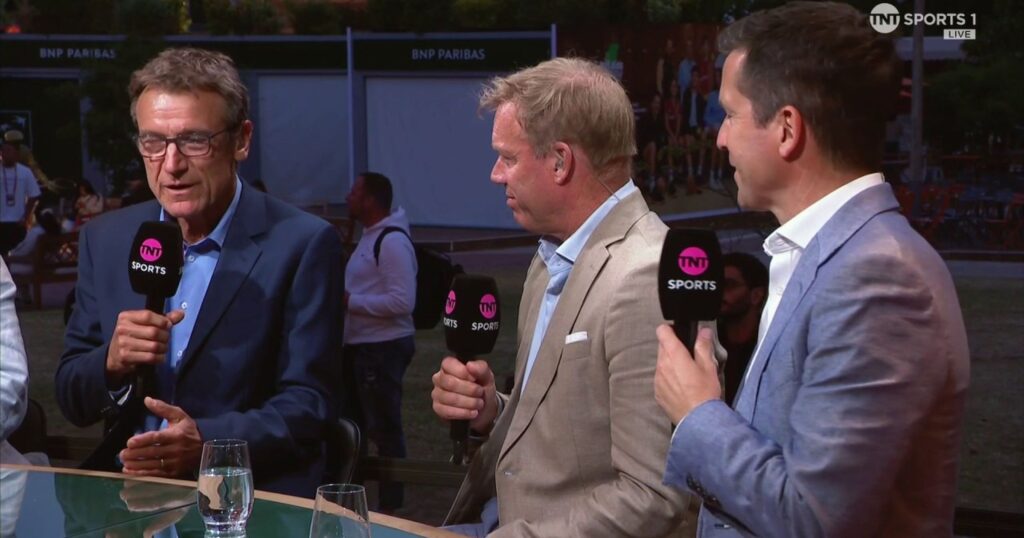In the annals of tennis history, few players have left an indelible mark quite like the Spanish great Rafael Nadal, often referred to as a clay court titan due to his unparalleled success at Roland-Garros, the French Open. However, as discussions about the future of tennis continue to unfold, attention has shifted towards the young Spanish prodigy Carlos Alcaraz. Recently, Mats Wilander, a former world-class player and current commentator, sparked controversy and intrigue by stating that Alcaraz might possess a skill set that surpasses that of Nadal at the same age, particularly when it comes to playing on various surfaces.
Wilander’s comments have ignited a debate among tennis enthusiasts regarding Alcaraz’s potential and the legacy of Nadal. As the sport evolves, young talents like Alcaraz emerge with powerful baseline games, aggressive net play, and a level of athleticism that challenges the records set by their predecessors. At just 20 years old, Alcaraz’s rise through the ranks has been nothing short of meteoric, culminating in triumphs on both hard courts and clay, affirming his versatility and readiness for major tournaments.
A standout performance during the 2022 US Open, where Alcaraz clinched his first Grand Slam title, showcased his abilities to handle pressure and deliver exceptional tennis. Critics and fans alike have been impressed by his maturity on the court, tactical ingenuity, and the capacity to perform at an elite level in high-stakes matches. His aggressive playing style, combined with a remarkable touch and finesse, makes him a formidable opponent, capable of competing against the best in tennis.
In drawing comparisons between Alcaraz and Nadal, it is important to consider not only their playing styles but also the unique pressures each faced at a young age. Nadal, who made his grand slam debut in 2003, cultivated his craft in the shadow of legendary figures like Roger Federer and Pete Sampras. The weight of expectation was immense, yet he evolved into a dominant figure on clay, a surface that would become synonymous with his legacy. Alcaraz, however, has arrived during a transition period in tennis, where he faces not only those legends but also a new generation of players eager to make their mark.
Wilander’s assertion that Alcaraz may be “probably a better player than Nadal was at 22 on other surfaces” points to the latter’s already well-documented dominance on clay, which is often where he has excelled. While Nadal’s prowess on clay is unquestionable, it has always raised discussions about his adaptability on faster surfaces like grass and hard courts. In contrast, Alcaraz has demonstrated a unique capacity to adapt his game to win tournaments across different surfaces.
The ever-changing dynamics of tennis underscore the substantial evolution from Nadal’s era to the current landscape of the game. The training methods, athletic conditioning, and mental fortitude required have transformed vastly, and young players like Alcaraz benefit from these modern advancements. Additionally, their competitive landscape consists not only of storied champions but also formidable up-and-coming talent that pushes each athlete to improve continuously.
In conclusion, the notion that Carlos Alcaraz may eclipse Rafael Nadal at an equivalent age on different surfaces propels a fascinating narrative in tennis. As the world closely watches Alcaraz’s career unfold, evaluations, opinions, and accolades will undoubtedly shape the dialogue surrounding his place in the sport. Wilander’s comments serve not only as a compliment to the immense talent of Alcaraz but also as a reminder of the ongoing evolution of tennis and the legends involved. It invites fans and analysts alike to contemplate what the future holds for not just Alcaraz, but for the sport as a whole. Applauding new talents doesn’t diminish the journey of established champions but rather enriches the tapestry of tennis history.



